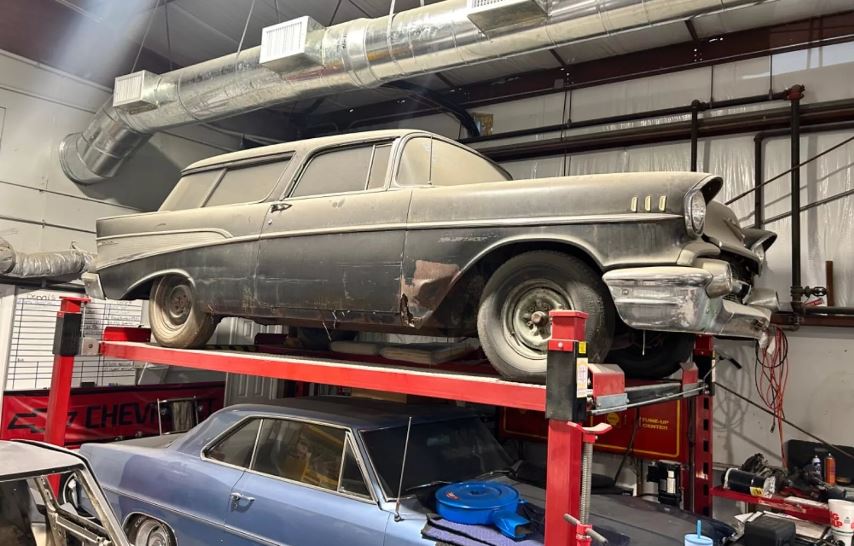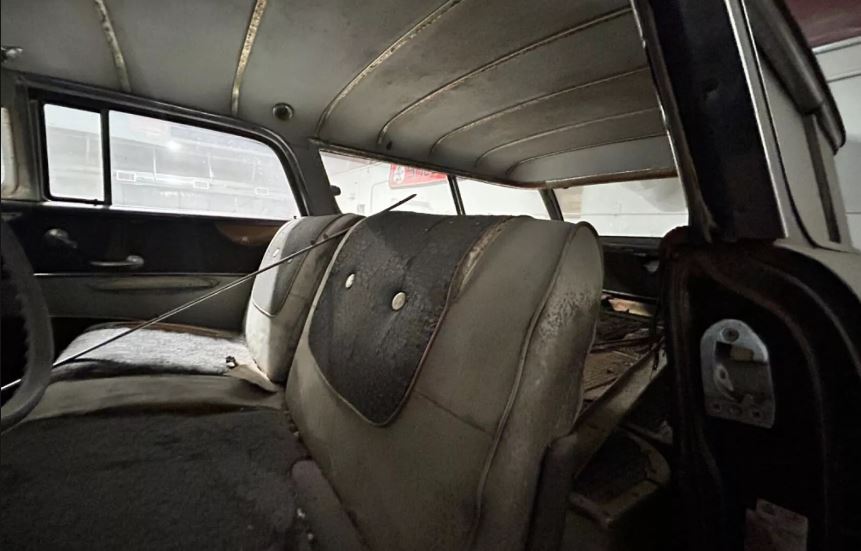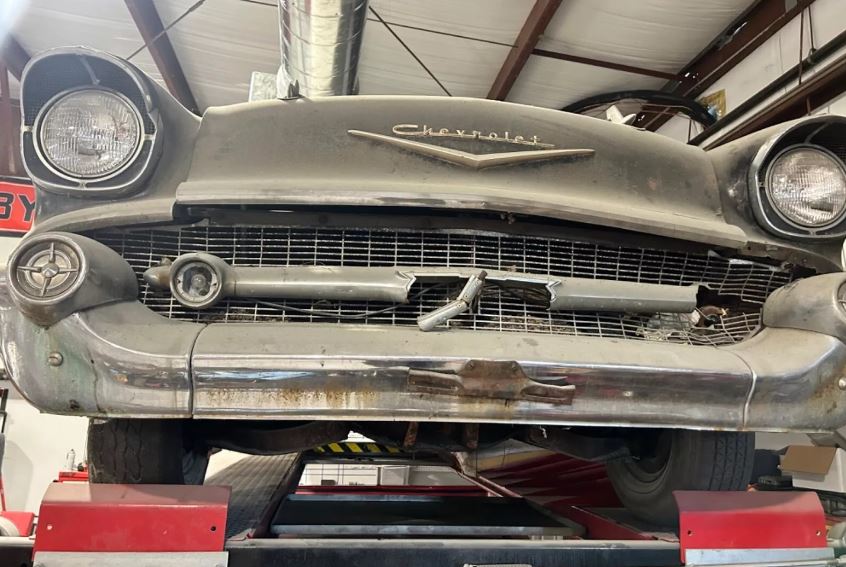In 1954, Chevrolet unveiled the Nomad concept car to the world. Part of the GM Motorama line of “dream cars,” the Nomad was a two-door wagon with a Corvette front clip. Following positive reactions from the public, GM approved the Nomad for 1955 production. But while it retained nearly everything from the A-pillar to the rear, Chevrolet dropped the Corvette front fascia.
The Nomad was integrated into the then-new Tri-Five lineup. The full-size arrived in showrooms in three trim levels: the base 150, the mid-range 210, and the premium Bel Air. Each included various body styles for a total of 17 versions. The Nomad was based on the Bel Air and topped the two-door wagon range, which also included the 150 and 250 Handyman.
The Tri-Five was a massive success, selling nearly 1.8 million units in 1955. The trend continued in 1956, with 1.62 million deliveries. Chevrolet sold another 1.55 million cars in 1957. Overall, the Tri-Five moved nearly five million units over three model years.
But while the sedans, coupes, and four-door wagons sold like hotcakes, the two-door grocery getters found notably fewer customers. Of the 579,622 station wagons sold from 1955 to 1957, only 140,015 were two-door rigs. And most of these vehicles were ordered in 150 and 210 rigs. Specifically, only 22,897 buyers left dealerships with a Nomad in three years. That’s only 3.9% of total wagon production and less than 0.4% of the total Tri-Five output.
Why was the Nomad a slow seller? Well, experts agree that 1950s drivers weren’t ready for a luxurious utility vehicle.
The Nomad is arguably the rarest iteration of the lineup and, nearly 70 years later, among the most desirable Tri-Five. But ironically enough, many of these grocery getters are still rotting away in junkyards and barns, waiting for a second chance that may never come. This 1957 example is one of those rigs.
Described as a classic that “has been preserved in a garage/barn for the last 15-20 years,” this Nomad looks more like a vehicle neglected in improper storage for over three decades. It’s covered in a thick layer of dust and comes with significant rust issues.
Sure, the body doesn’t look all that bad, but the floor pans have massive holes in them, and the frame looks like it will need a lot of work to become usable. This wagon is not the kind you could drive as an unrestored survivor. The engine bay doesn’t bring good news either. While the Nomad still has an engine that may be original, the unit is missing a lot of gear, and it’s covered in what appears to be rat poop.
On the flip side, this Nomad could very well be an unrestored survivor. The weathered two-door interior seems to be all-original, while the shell doesn’t show signs of a color change. If anything, this Nomad may have gotten a repaint in the original color before it was parked decades ago.
Is it worth saving? Well, it depends on who you ask. A restoration may be too expensive for someone looking to flip the car for a profit. However, it may be worth it for someone who genuinely loves Nomad and approaches the project as a labor of love. I think it should be rescued simply because it’s one of only 6,264 Nomads built in 1957 and a wagon that’s becoming increasingly harder to find.
Now parked in a garage in Punta Gorda, Florida, this Nomad is auctioned off at no reserve with a high bid of $9,100 as of this writing. The ad expires in three days.


